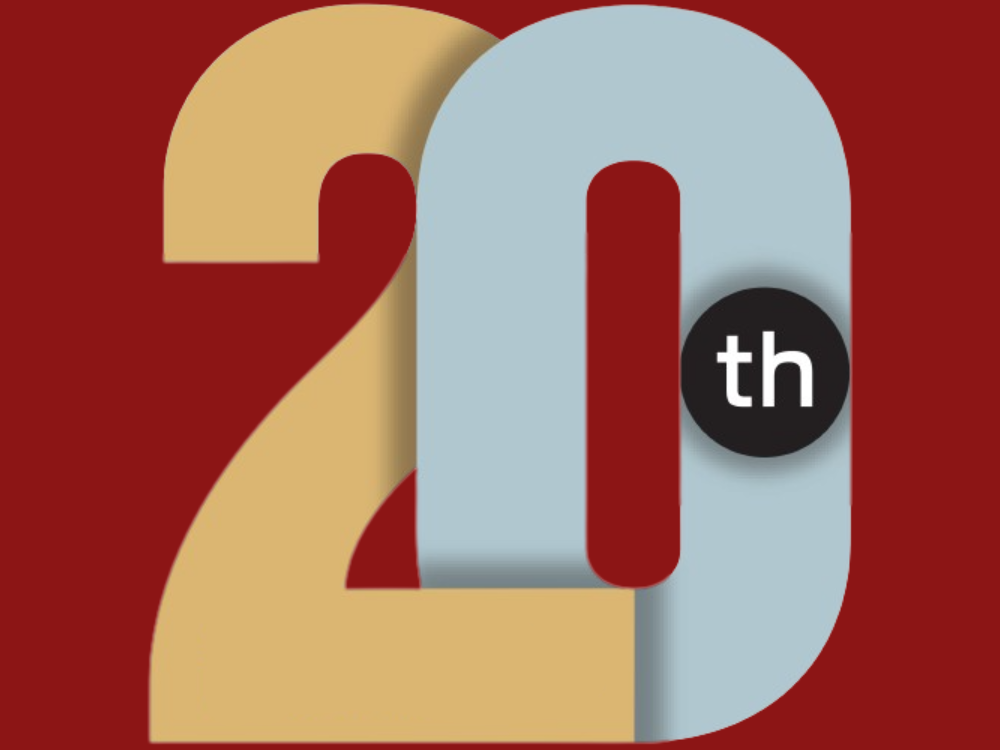 (Illustration by iStock/akinbostanci)
(Illustration by iStock/akinbostanci)

As the founding executive director of the Center for Social Innovation, which launched Stanford Social Innovation Review, it is hard to believe we are at its 20th anniversary. It’s even harder to believe how much the world has changed since my first day on the job.
A key driver of that change has been the speed of technological advances and the exponential growth of data. Whether you call this the Fourth Industrial Revolution or the Data Age, the foundation of how we work and live as individuals, communities, countries, and globally has forever changed.
In recent years, I’ve been thinking about how the Data Age has affected the world we envisioned when we started the center. The early vision of the center was to create “a cross-sector community actively building a more just, sustainable, and prosperous world.”1 It remains a worthwhile vision today. The question we need to ask ourselves as social entrepreneurs, activists, philanthropists, nonprofit providers, and government administrators is: If we are indeed living in the Data Age, are we building the kind of organizations and systems that will ensure that the future will be just, sustainable, and prosperous for all?
There is no doubt that everyone’s intent is to ensure that the answer to that question is a resounding “yes.” However, the reality is that we are not keeping up with the changes that the Data Age is having on society and social change organizations. To truly create the world we envision, the structure and norms of the social impact system need to change fundamentally.
The social impact sector is falling short in its ability to harness the power of the Data Age because it focuses on the past rather than on the future. If we don’t make an intentional shift to be more future focused, the next 20 years will push the sector, and those it serves, even further behind. It behooves all of us to remember Alicia Eggert’s powerful artwork that captures our lived reality: “This present moment used to be the unimaginable future.”
The Data Divide
Data is a form of power. And the sad reality is that power is being held increasingly by the commercial sector and not by organizations seeking to create a more just, sustainable, and prosperous world. A year into my tenure as the chief global impact officer at Splunk, I became consumed with the new era driven by data. Specifically, I was concerned with the emerging data divide, which I defined as “the disparity between the expanding use of data to create commercial value, and the comparatively weak use of data to solve social and environmental challenges.”2
We need to face the fact that the underlying foundation of society is shifting while the social sector is not. This foundational change is laid out in the new book coauthored by Eric Schmidt, Henry Kissinger, and Daniel Huttenlocker, The Age of AI. They make the case that we are moving into a coexistence between humanity and machines. From a historical context, the evolution of humans started in the age of faith that evolved into the age of reason. The future upon us now is the age of people and machines. The world around us will increasingly be full of intelligent systems that will be humanlike but not human. Society, especially the social sector, must get ahead of the implications of that and plan for both the good and bad impact it will have on society. After all, who better to look out for the “people” part of the “people and machines” than the human-centric social sector?
To effectively address the emerging data future, the social impact sector must build an entire impact data ecosystem for this moment in time—and the next moment in time. The way to do that is by investing in those areas where we currently lag the commercial sector. Consider the following gaps:
- Nonprofits are ill-equipped with the financial and technical resources they need to make full use of data, often due to underfunding.
- The sector’s technical and data talent is a desert compared to the commercial sector.
- While the sector is rich with output and service-delivery data, that data is locked away or is unusable in its current form.
- The sector lacks living data platforms (collaboratives and data refineries) that can make use of sector-wide data in a way that helps improve service delivery, maximize impact, and create radical innovation.
The harsh realities of the sector’s disparate data skills, infrastructure, and competencies show the dire current state. For the impact sector to transition to a place of power, it must jump without hesitation into the arena of the Data Age—and invest time, talent, and money in filling in these gaps.
Regardless of our lagging position, the social sector has both an incredible opportunity and a unique capacity to drive the power of data into the emerging and unimaginable. The good news is that there’s pivotal work already happening in the sector that is making it easier to build the kind of impact data ecosystem needed to join the Data Age. The framing and terms used to describe this work are many—data for good, data science for impact, open data, public interest technology, data lakes, ethical data, and artificial intelligence ethics.
These individual pieces, while important, are not enough. To fully exploit the power of data for a more just, sustainable, and prosperous world, we need to be bold enough to build the full ecosystem and not be satisfied with piecemeal work. To do that we should begin by looking at the assets that we have and build on those.
Data Assets to Build On
People. There are dedicated leaders in the field of social innovation who are committed to using data for impact and who have been doing that for many years. We need to support them by investing in their work at scale. The list of people leading the way is constantly growing, but to name a few: Stefaan G. Verhulst, Joy Buolamwini, Jim Fruchterman, Katara McCarty, Geoff Mulgan, Rediet Abebe, Jason Saul, and Jake Porway.
While this is an important first step, we must ensure that this work is not siloed in organizations or at the field level. In fact, a core skill for all jobs going forward is a baseline competency in data. Thus, program, communications, finance, and HR staff at all levels need to have data skills. And of course, attracting highly skilled data talent into the impact sector must be prioritized, funded, and not considered overhead.
Proximity. The social sector is engaged directly with solving social problems, and with this proximity comes a deep understanding of intangible truths or unseen facts that are not always clear in the data. While data can reveal a problem, social sector leaders and staff can see why that problem exists—and how it can best be addressed. They can also see the very real, often very raw effect it is having on the people involved.
With this proximity comes the potential to bridge data and human reality. Building from what Jake Porway wrote last year, there are three core activities social sector actors can use to take full advantage of its proximity: observe the world today, reason about how our actions could change it, and act to make the world look a little more like our goal state.3
With the help of a robust data ecosystem, we can expand our observation capacity by aggregating information at a scale that people could not do alone. Then, we can enter the reason stage with data insights anchored in the human experience. Lastly, by expanding our observations and reasoning, we can increase the probability of a better outcome in the act stage.
Purpose. Nonprofit organizations are built around mission and values. It was why they were created in the first place and what guides the work, day in and day out. That grounding will help ensure that the data ecosystem we create is mission driven and guided by values.
And, if we’re quick to act, we can pull in the talent of the technology-steeped workforce that is the Millennial and Gen Z generations. Recent research shows that this is possible: Millennials would be more loyal to a company that helps them contribute to social and environmental issues, and Generation Z is the first generation to prioritize purpose over salary.4 The commercial sector is frantically trying to add purpose, but the social sector is light years ahead in that department.
Patience. The social sector knows that social change does not happen in time for quarterly shareholder reports—instead, it prioritizes impact over financial value. We know investments in society and the environment may not see a return for many years or, even, many generations. That is a superpower and our leg up on the commercial sector. That said, it isn’t an argument to exclude them. In fact, we must engage with the commercial sector as partners if we are to bridge the data divide and build a data-driven impact ecosystem.
With so many global crises already unfolding, we need problem solvers from all sectors of society to harness the power of data for positive social and environmental impact. As Jim Phills Jr., Dale Miller, and I wrote in our 2008 SSIR article “Rediscovering Social Innovation,” “Finally, we believe the most important implication is the importance of recognizing the fundamental role of cross-sector dynamics: exchanging ideas and values, shifting roles and relationships, and blending public, philanthropic, and private resources.” 5
This approach still holds true today. We need to bring people from across all sectors of society to work together. But just as we can’t wait for the commercial sector to invite us to the data table, we can’t sit by and wait for them to join us at the social change table. It’s time the social sector started to drive the power of data, alongside the commercial sector, toward a future that is just, sustainable, and prosperous for all.
Support SSIR’s coverage of cross-sector solutions to global challenges.
Help us further the reach of innovative ideas. Donate today.
Read more stories by Kriss Deiglmeier.

